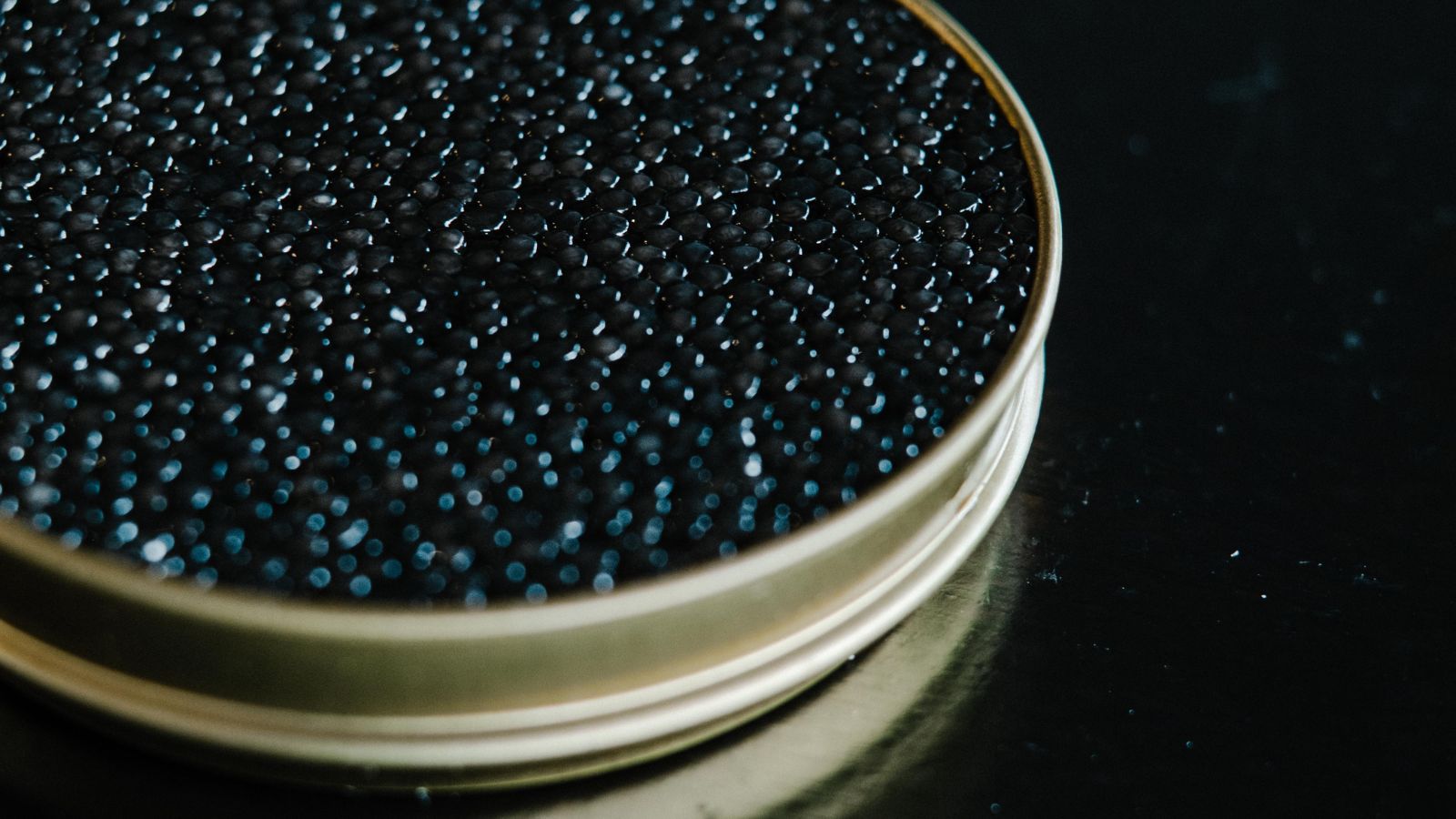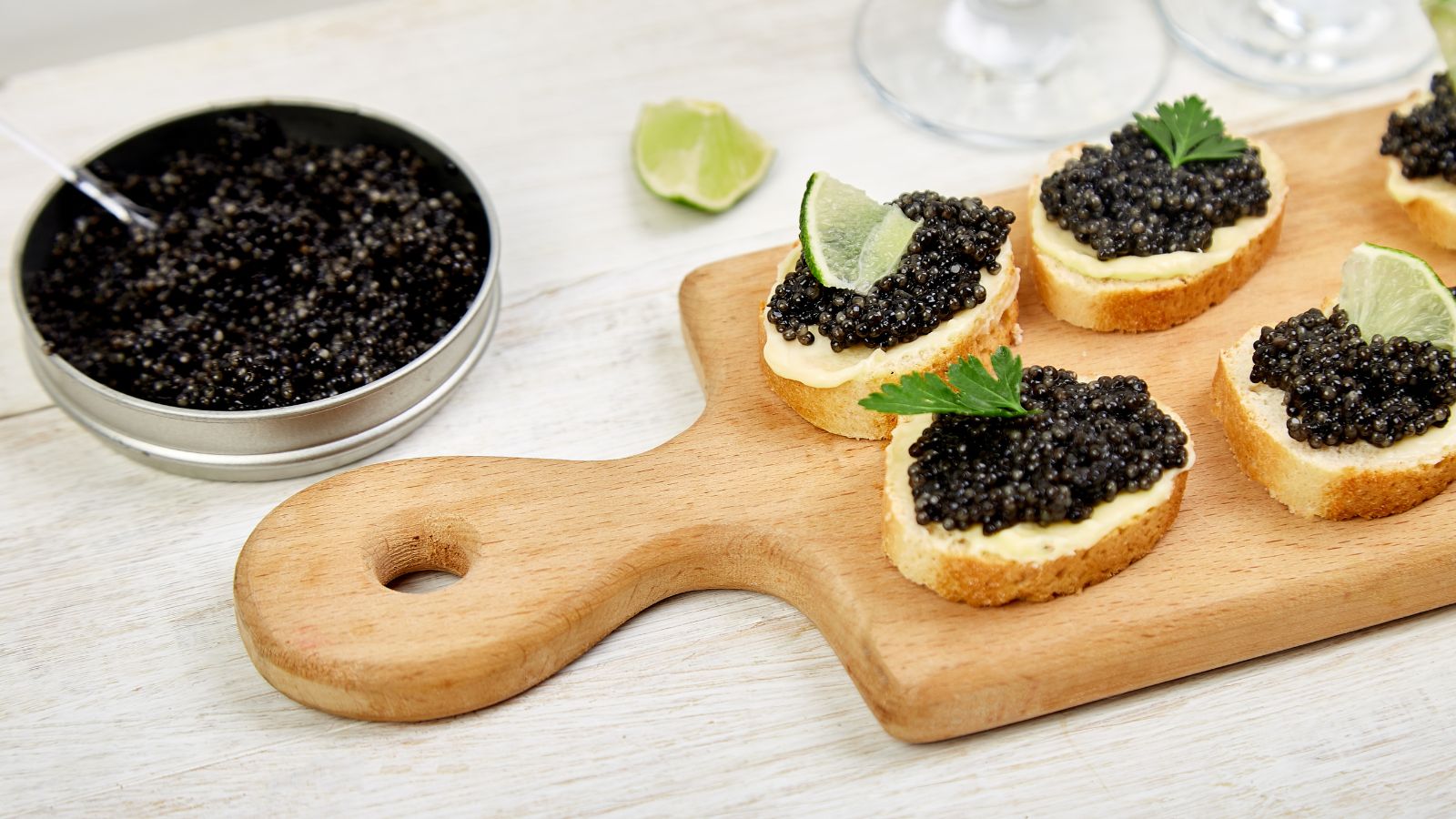
What if one of the most luxurious foods in the world could also be a powerhouse of nutrition? Could caviar, traditionally reserved for fine dining and special occasions, actually offer health benefits worthy of the “superfood” label? And what does this mean for those seeking nutrient-dense foods beyond the usual kale, salmon, and chia seeds? These questions have sparked growing interest in caviar—not just as a culinary indulgence but as a potential addition to a health-conscious diet.
What Is Caviar?
Caviar is the salt-cured roe (eggs) of sturgeon, though the term is sometimes extended to the eggs of other fish species, such as salmon. The most prized varieties come from the Beluga, Ossetra, and Sevruga sturgeon, largely found in the Caspian and Black Sea regions. Known for its delicate, buttery flavor and tiny bead-like texture, caviar has long been a symbol of luxury. But beyond its gourmet appeal, caviar offers a remarkable profile of nutrients that are worth considering.
Protein Power
One of the key features of caviar is its high protein content. Protein is essential for muscle repair, hormone production, and overall cellular function. A single ounce (about 28 grams) of caviar contains roughly 4 grams of protein. While this might not seem substantial compared to meats or legumes, the quality of protein is notable. Caviar provides all nine essential amino acids, making it a complete protein source—something that is particularly beneficial for those seeking nutrient-dense, compact foods.
Omega-3 Fatty Acids: Heart-Healthy Fats
Perhaps the most celebrated aspect of caviar is its abundance of omega-3 fatty acids. Omega-3s, specifically eicosapentaenoic acid (EPA) and docosahexaenoic acid (DHA), are crucial for heart health, brain function, and inflammation reduction. Studies have shown that regular intake of omega-3 fatty acids can lower blood pressure, reduce triglyceride levels, and even support cognitive function. In just one ounce of caviar, there is approximately 1.5 to 2 grams of omega-3s—a comparable amount to a serving of fatty fish like salmon. And for the curious palate, what does caviar taste like? Many describe it as slightly briny, buttery, and subtly nutty, with a delicate pop that melts in the mouth.
Vitamins and Minerals Galore
Caviar is a surprisingly rich source of vitamins and minerals, many of which play vital roles in overall health:
- Vitamin B12: Caviar is exceptionally high in vitamin B12, essential for red blood cell formation, nerve health, and DNA synthesis. Just one ounce provides more than 100% of the recommended daily intake.
- Vitamin D: Important for bone health, immune function, and mood regulation, vitamin D is often deficient in modern diets. Caviar contains modest amounts, contributing to your daily requirement.
- Selenium: This trace mineral acts as a powerful antioxidant, helping protect cells from oxidative damage and supporting thyroid function.
- Iron: Iron is vital for oxygen transport in the blood, and caviar offers a bioavailable form of this essential mineral.
- Magnesium and Phosphorus: These minerals are critical for bone health, energy production, and cellular function.
Antioxidant Properties
Caviar contains several compounds with antioxidant activity, such as vitamin E and selenium. Antioxidants help combat oxidative stress, which is linked to aging, inflammation, and chronic diseases like cardiovascular disease and cancer. Regular consumption of antioxidant-rich foods supports cellular health and may help protect against degenerative conditions.
Low in Carbs, High in Fat
Caviar is naturally low in carbohydrates, making it suitable for low-carb or ketogenic diets. Most of the calories in caviar come from fat, primarily the heart-healthy omega-3s.
This unique macronutrient profile allows caviar to provide sustained energy while supporting satiety—a factor often overlooked in luxury foods.
Potential Brain Benefits
The combination of omega-3 fatty acids, vitamin B12, and choline in caviar suggests potential cognitive benefits. DHA, in particular, is a structural component of the brain and retina, and adequate intake is linked to improved memory and reduced risk of neurodegenerative diseases. Vitamin B12 deficiency, conversely, is associated with cognitive decline. Thus, the nutrient synergy in caviar may support brain health in meaningful ways.
Serving Size and Caloric Considerations
Despite its nutritional benefits, caviar should be consumed in moderation. One ounce contains approximately 70–90 calories and can be high in sodium—often around 250 mg per ounce or more, depending on the curing process. Excessive sodium intake can lead to elevated blood pressure and other cardiovascular risks. Therefore, enjoying caviar as an occasional treat or a nutrient-dense garnish is ideal.
Sustainability and Ethical Considerations
One important factor when considering caviar as a superfood is sustainability. Traditional sturgeon caviar is often overfished, leading to endangered species and ecological disruption. However, aquaculture and farmed caviar have become increasingly common, providing high-quality alternatives with less environmental impact. Choosing sustainably sourced caviar not only protects ecosystems but ensures that this luxury food can continue to be enjoyed responsibly.
How to Incorporate Caviar Into Your Diet
Caviar doesn’t have to be reserved for special occasions. There are several ways to integrate it into your diet to maximize both flavor and nutritional benefit:
- On whole-grain toast or crackers: Adds a protein and omega-3 boost.
- Mixed into scrambled eggs or omelets: Elevates the meal’s nutrient density.
- As a garnish on salads or sushi: Enhances both taste and visual appeal.
- Blended into spreads or dips: Combines luxury with functional nutrition.
It’s worth noting that pairing caviar with foods rich in healthy fats, such as avocado, can enhance the absorption of fat-soluble vitamins like vitamin D and E.
Is Caviar Truly a Superfood?
The term “superfood” is often marketing-driven, but by nutritional standards, caviar fits the bill. It is nutrient-dense, packed with high-quality protein, essential fatty acids, vitamins, minerals, and antioxidants. Moreover, it offers potential cardiovascular and cognitive benefits. However, like all nutrient-rich foods, balance is key. Its high cost, sodium content, and luxury status make it more of an occasional supplement to a healthy diet rather than a daily staple for most people.
Final Thoughts
Caviar may no longer be seen solely as a decadent indulgence reserved for the elite. With its impressive nutrient profile and potential health benefits, it could be considered a modern superfood—albeit an expensive one. For those seeking nutrient density, cognitive support, and heart-healthy fats, caviar offers a unique, gourmet path to wellness. Sustainability and moderation remain crucial, but with careful selection, this luxurious food can earn a rightful place in the superfood conversation.
In the end, caviar challenges our conventional ideas of health foods: it’s luxurious, flavorful, and remarkably nutrient-rich. Perhaps it’s time to reconsider caviar—not just as a symbol of indulgence but as a potent, edible source of wellness.

